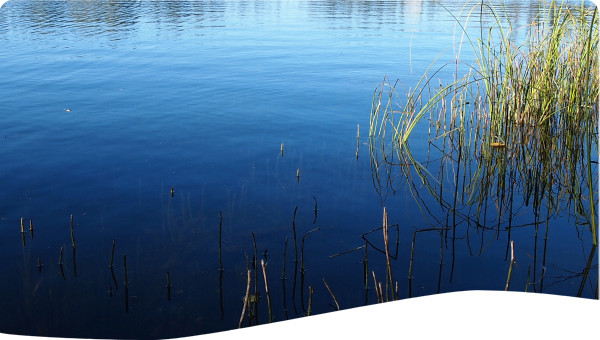National IWRM plans can be used to help guide changes from fragmented, to more integrated approaches of water resource management. In simple terms, national IWRM plans should be considered as a road map towards better water resource management, that outline the pathway and key milestones towards this goal. National IWRM plans identify actions and a set of management instruments (Tools C) that are embedded in a wider framework of policies (Tools A1), legislation (Tools A2), financing structures (Tools D), and capable institutions (Tools B) with clearly defined roles. These actions and management instruments effectively regulate the use, conservation, and protection of the water resources, to manage water resources in a sustainable and balanced way. To do so, national IWRM plans follow principles which acknowledge all activities and developments which require or influence water resources, as to provide enough water to meet ecological requirements and the demands from water supply and sanitation, land use and forestry, fisheries, hydropower, and industrial use. As no one-solution-fits-all, when preparing an IWRM plan, every nation needs to consider its own unique water demands and supply characteristics alongside its geographical, ecological, cultural, and political context.
What are national IWRM plans?
Designing national IWRM plans
The process of designing a national IWRM plan can follow a distinct five-step approach (Fig. 1):
Figure 1. Stages in IWRM Planning and Implementation (Adapted from UN Water and GWP, 2007).
- Identify the range of water resources issues that occur within the country and assess their severity, mutual dependence, and frequency of occurrence (Tools C1). A “user requirement issue” results from an inadequate matching of user requirements – demand – and water resources availability and quality – supply (Tool C3.01; Tool C3.02). An “impact issue” arises from human activities that negatively affect the quantity or quality of the water resource or from natural causes in the case of floods and droughts (Tool C1.05). Ecosystem requirements and water quality management are often largely neglected but need to be given full emphasis in the planning process. International/transboundary issues (e.g., upstream-downstream relationships) should also be considered (Tool C1.09).
- Identify the management interventions at all levels (national, basin, regional, local etc.) necessary to address the issues identified. Based on these interventions, identify the management functions required at each level. These functions can include policy development, planning and coordination, water allocation, discharge regulation, monitoring, enforcement, and data collection and dissemination. It is important to also identifying existing international agreements and processes, as international/transboundary issues may require coordination of international interventions. Decisions support systems can assist in the process of identifying adequate management interventions (Tools C2).
- Analyse existing institutional structures and capacities and determine the opportunities/constraints of the water issues to be dealt with, and management functions required. Water resource management institutions (or management agencies) include transboundary organisations (Tool B3.01), national agencies (Tool B3.02), basin organisations (Tool B3.04), regulatory bodies, local authorities, private sector, and civil society groups (Tool B3.03). Institutional capacities relate to factors such as the efficiency and effectiveness of these institutional/management structures and water service providers, abundance of human and financial resources, available management instruments (e.g., water resource assessments, information, and monitoring; economic instruments etc.), existing policies and legislation, and capacity for change. International structures and agreements may be required to supplement the national institutions (Tools B1; Tools B2).
- Prepare and implement strategies for the development of deficient parts of the framework of national policies. Plans are often more effective when they focus on one or two critical water resource challenges, so ideally, plans should be combined with other national environmental plans and strategies (e.g., the National Biodiversity Strategy and Action Plans and the National Plans to Combat Desertification) or strategies in line within achieving their sustainable development goals (e.g., poverty reduction strategy, climate change strategy). To be successful, the IWRM planning process must encourage the broad participation of all stakeholders in a well-organised and time-bound fashion. Thus, capacity building and empowerment activities should be incorporated within these strategies to encourage the participation of stakeholders at all levels, both men and woman, in all relevant structures (public, private, civil society) (Tools B5 Addressing Gender Inclusion). These activities can help promote the formulation of public-private partnerships and provide opportunities for cross-sectoral and multi-stakeholder dialogues (Tool B3.05). Communication activities (Tools C6) should be employed to engage the key stakeholder groups, construct a realistic picture of water resource use and management, and ensure that stakeholders are up to date on plan preparation and their contribution. Here, mechanisms for resolving conflicts between competing stakeholders can be applied (Tool C6.03). For transboundary water resources, international strategies will need to be developed in collaboration with other riparian nations.
- Design robust monitoring and evaluation systems for reporting on the degree of implementation of IWRM in national plans and policies (Tool C2.05). Indicators can be created for monitoring IWRM process, and the performance of IWRM framework. Based on these results, elements of the national IWRM plan can be revised and improved. To do so, IWRM structures will need to be flexible as so when the need arises, they are open to expansion.

IWRM Tools
Related resources
Related case studies
Related platforms
 Tool -
Tool -

